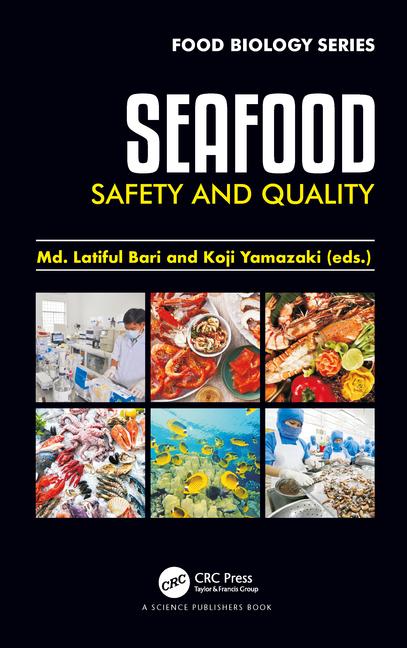Presentable Food-Safety Tactic
by Richard Mitchell
Modern packaging materials offer a range of features aimed at keeping pathogens and contaminants away from products.
Thanks to increasing attention to cleanliness and sanitation procedures, meat and poultry plant operators are winning crucial battles in the war on Salmonella, E.coli O157: H7, Listeria moncytogenes, and other harmful microorganisms. Moreover, stronger measures related to product packaging offer additional promises by ensuring that product integrity is maintained once products leave facilities.
Meat products increasingly reach the marketplace in packaging featuring tamper-evident films and labels, enhanced barrier seals, antimicrobial resins and other safeguards. Case-ready packaging and retort bags also continue providing safeguards against contamination.
Food analysts see such measures easing food-safety concerns of federal regulators and consumers, particularly in light of recent foodborne outbreaks. While quality assurance primarily is achieved at the meat production level, an additional line of defense also is being garnered with improved packaging, notes Huston Keith, principal of Keymark Associates, a Marietta, GA-based market research and business development consulting firm specializing in packaging.
“There is not much you can do for BSE [bovine spongiform encephalopathy or mad cow disease] from a packaging standpoint, but the tamper-evident features are working pretty darn good — and such tools will defend most products,” he says.
These tamper-evident components come in a variety of formats such as polypropylene and polystyrene trays marketed by Lake Forest, IL-based Pactiv Corp. Trays are designed to run consistently through most packaging machines and to enable over-wrap and shrink-wrap films to fit tightly around beef or poultry in the containers. Because it is virtually impossible to reapply the films with similar pressure after containers are opened, product tampering is self evident, reports Mark Spencer, Pactiv manager of product development.
Pactiv also offers enhanced safety tools for the foodservice arena with its hinged-lid containers designed with flat panels, instead of ridged surfaces, for improved label adherence. Ripping off labels, which help to seal containers, indicates the lid may have been opened after packaging.
“Consumers’ sophistication about food safety is rising, so product packaging has to keep improving,”
says Larry Rebodos, marketing manager for Pactiv’s Hefty Slide-Rite division. “Tamper-evident features are becoming a necessity across all types of food.”
says Larry Rebodos, marketing manager for Pactiv’s Hefty Slide-Rite division. “Tamper-evident features are becoming a necessity across all types of food.”
Meanwhile, Manteno, IL-based Zip-Pak attached a shrouded header to its slider zipper. The film must be torn off before users can access the zipper on resealable packages, Robert E. Hogan, Zip-Pak director of sales and marketing, explains. For added security, consumers also must pull apart additional film after opening the zipper to reach the meat. “Our focus groups indicate that having an extra barrier to guard against tampering is of significant value,” he states.
While such enhancements help protect beef and poultry at the retail level, packaging designed to minimize contamination during production also is becoming more prevalent. Fair Lawn, NJ-based VersaPack’s SCR Pouch, a retortable, four-layer laminate pouch with a Zip-Pak zipper, enables manufacturers to put all the components of a meal into a single container for cooking or pasteurizing without later repackaging the product, Anthony Catino, VersaPack director, explains.
Demand for bags suitable for post-pasteurization procedures is also increasing. Products undergoing the post-pasteurization process, designed to kill beef and poultry surface microbes after packaging, typically are immersed in hot water, placed in a cabinet with condensing steam, or given a hot-water shower. Temperatures usually range from 160Þ F to 210Þ F, and the activity can last from 30 seconds to 15 minutes, depending on the temperature.
Zip-Pak redesigned a zipper to withstand strain from such treatments, and Duncan, SC-based Cryovac/Sealed Air is marketing a polyolefin-based bag, the CNP-310, which was created for post-pasteurization activity. The CNP-310 is able to withstand high temperatures, and because it goes into the retail case, has clearer optics and better shrink than most cook-in bags, says Jeff Rhodehamel, Cryovac/Sealed Air manager of poultry, seafood, and cook-in applications.
Cryovac also manufacturers a line of non-removable casings, designed to reduce contamination risks associated with removing casings after the cooking process. In this case, product is not re-handled prior to shipping.
Products include the CNT-115 color transfer casing, which releases color-coding to the meat’s surface during cooking to enhance the food’s presentation.
“The threat of Listeria remains a big concern, and it is leading to the development of products and processes to address the issue,” Rhodehamel notes.
Such innovations include new antimicrobial elements incorporated in — or coated onto — films to inhibit the growth of bacteria. Wakefield, MA-based Agion Technologies Inc., which supplies microbial compounds to packaging developers, designed a silver-ion formulation that is released in a slow and steady rate when moisture is detected in packages, explains Ravi Bhatkal, Agion vice president, upgrade strategy.
While antimicrobials have been available for years, Bhatkal notes that greater interest in food safety is resulting in new formulations and more aggressive adoption of the products in the United States and Europe — especially as potential users become increasingly comfortable with the concept. “The oral toxicity of the compound is lower than that of table salt,” he adds.
Indeed, VersaPack expects to respond to this interest with its release of an antimicrobial film this fall that will function as an oxygen scavenger in meat and poultry containers. Reduced oxygen makes it more difficult for bacteria to survive.
“Antimicrobials are important because it is impossible to mechanically get all oxygen out of packages,” he notes. “Even the modified atmosphere packaging [MAP] that is injected with carbon dioxide and nitrogen has residual amounts of oxygen.”
It is that virtual absence of oxygen in MAP trays that positions the packaging as a key food-safety tool, notes Marty Watson, national sales manager for Pactiv’s ActiveTech technology. Pactiv is marketing the R3 zero-oxygen case-ready package, which keeps meats fresher longer, and creates an environment that makes it almost impossible for aerobic bacteria to thrive, he says.
“Technology that enhances safety is developing constantly and probably at a faster pace than anytime before,” Watson adds. “Food safety is a significant driver for case-ready products, and is a major reason why ground beef has penetrated that arena.”
Looking Ahead
Future packaging features already under development include enhanced lamination and printing processes from VersaPack that allow manufacturers to more efficiently trace product ingredients, Catino reports. The technology will enable processors to list all pertinent data on packages, and perhaps narrow recalls to products produced on specific days or times, he adds.
The information will be undetectable by consumers, and could also include the locations around the world where each ingredient was produced and when they were shipped, he says. Rollout is expected within two years.
“Being able to trace products back to production dates and times is at the forefront of industry concerns,” says Joe Weber, vice president of fresh pork for Smithfield, VA-based Smithfield Packing Co., a unit of Smithfield Foods. “It is important to know where supplies are coming from, particularly with today’s bio-terrorism issues.” Smithfield currently incorporates bar codes for product tracking, he adds.
“Being able to trace products back to production dates and times is at the forefront of industry concerns,” says Joe Weber, vice president of fresh pork for Smithfield, VA-based Smithfield Packing Co., a unit of Smithfield Foods. “It is important to know where supplies are coming from, particularly with today’s bio-terrorism issues.” Smithfield currently incorporates bar codes for product tracking, he adds.
Other safety enhancements on the drawing board are expected to include capability to signal spoilage in beef and poultry containers; indicate temperatures changes after packaging; specific safety benchmarks; and microprocessors attached to products for enhanced data storage.
Suppliers participating in this article include:
- Cryovac/Sealed Air,
phone (864) 433-2000 or (800) 845-3456,
fax (864) 433-2134, e-mail mkt@sealedair.com, or visit www.cryovac.com
- Pactiv Corp.,
phone (847) 482-2288 or (888) 828-2850, fax (847) 482-4564, or visit www.pactiv.com
- VersaPack, phone (201) 797-7516,
fax (201) 797-7517 , e-mail acatino@versapack.com, or visit www.versapack.com
- Zip-Pack,
phone (815) 468-6500 or (800) 488-6973, fax (815) 468-6550,
e-mail info@zippak.com, or visit www.zippak.com
- Cryovac/Sealed Air,
phone (864) 433-2000 or (800) 845-3456,
fax (864) 433-2134, e-mail mkt@sealedair.com, or visit www.cryovac.com
- Pactiv Corp.,
phone (847) 482-2288 or (888) 828-2850, fax (847) 482-4564, or visit www.pactiv.com
- VersaPack, phone (201) 797-7516,
fax (201) 797-7517 , e-mail acatino@versapack.com, or visit www.versapack.com
- Zip-Pack,
phone (815) 468-6500 or (800) 488-6973, fax (815) 468-6550,
e-mail info@zippak.com, or visit www.zippak.com
Richard Mitchell is a Chicago-area free-lance writer.



Report Abusive Comment